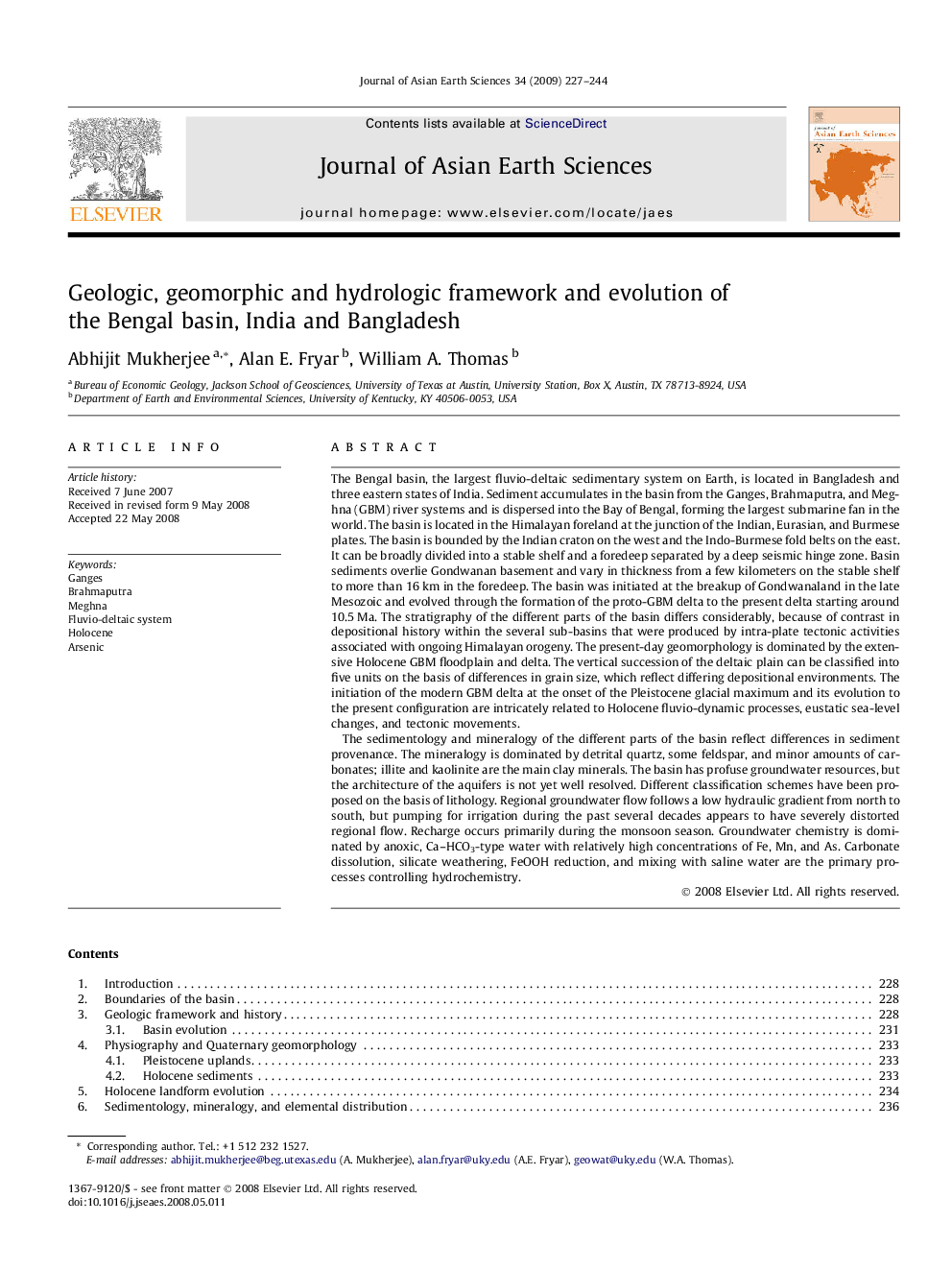| کد مقاله | کد نشریه | سال انتشار | مقاله انگلیسی | نسخه تمام متن |
|---|---|---|---|---|
| 4732440 | 1356865 | 2009 | 18 صفحه PDF | دانلود رایگان |

The Bengal basin, the largest fluvio-deltaic sedimentary system on Earth, is located in Bangladesh and three eastern states of India. Sediment accumulates in the basin from the Ganges, Brahmaputra, and Meghna (GBM) river systems and is dispersed into the Bay of Bengal, forming the largest submarine fan in the world. The basin is located in the Himalayan foreland at the junction of the Indian, Eurasian, and Burmese plates. The basin is bounded by the Indian craton on the west and the Indo-Burmese fold belts on the east. It can be broadly divided into a stable shelf and a foredeep separated by a deep seismic hinge zone. Basin sediments overlie Gondwanan basement and vary in thickness from a few kilometers on the stable shelf to more than 16 km in the foredeep. The basin was initiated at the breakup of Gondwanaland in the late Mesozoic and evolved through the formation of the proto-GBM delta to the present delta starting around 10.5 Ma. The stratigraphy of the different parts of the basin differs considerably, because of contrast in depositional history within the several sub-basins that were produced by intra-plate tectonic activities associated with ongoing Himalayan orogeny. The present-day geomorphology is dominated by the extensive Holocene GBM floodplain and delta. The vertical succession of the deltaic plain can be classified into five units on the basis of differences in grain size, which reflect differing depositional environments. The initiation of the modern GBM delta at the onset of the Pleistocene glacial maximum and its evolution to the present configuration are intricately related to Holocene fluvio-dynamic processes, eustatic sea-level changes, and tectonic movements.The sedimentology and mineralogy of the different parts of the basin reflect differences in sediment provenance. The mineralogy is dominated by detrital quartz, some feldspar, and minor amounts of carbonates; illite and kaolinite are the main clay minerals. The basin has profuse groundwater resources, but the architecture of the aquifers is not yet well resolved. Different classification schemes have been proposed on the basis of lithology. Regional groundwater flow follows a low hydraulic gradient from north to south, but pumping for irrigation during the past several decades appears to have severely distorted regional flow. Recharge occurs primarily during the monsoon season. Groundwater chemistry is dominated by anoxic, Ca–HCO3-type water with relatively high concentrations of Fe, Mn, and As. Carbonate dissolution, silicate weathering, FeOOH reduction, and mixing with saline water are the primary processes controlling hydrochemistry.
Journal: Journal of Asian Earth Sciences - Volume 34, Issue 3, 31 March 2009, Pages 227–244